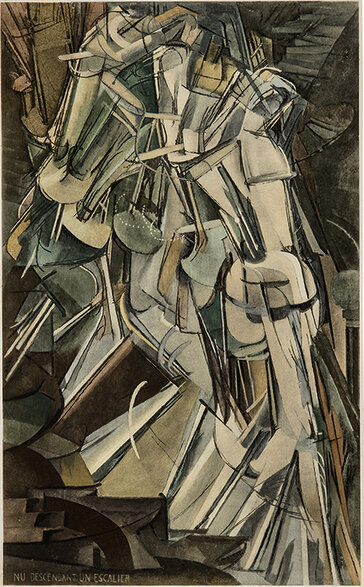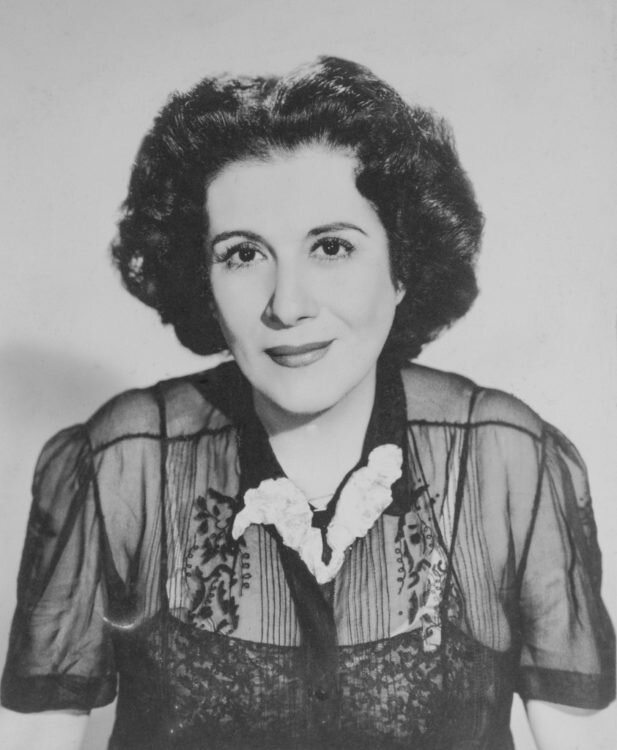In the final 20 years of his life, Marcel Duchamp secretly carried out work on an installation piece that none of his friends were aware of at all. Quite an achievement for one of the 20th Century’s most famous artists. He gave explicit instructions that it was not to be displayed to the public until after his death which was in 1968, and the work had puzzled and intrigued friends and art critics alike for more than 30 years since. It had been assumed that Duchamp had given up producing art decades before – but not so.
Marcel Duchamp, ‘Etant Donnes’ (Given), 1948-68, mixed media
The personal drama that inspired this masterpiece is as fascinating as the piece itself. Born in 1887, Duchamp was a French painter, sculptor, chess player and writer whose work is associated with Cubism, Dada, conceptualism, whatever took his fancy at the time. Early in his career he experimented with various painting styles which he later referred to as his swimming lessons. Having become proficient in a particular style, he got bored with it and moved on to the next. The final painting during this restless period was the now famous Nude Descending A Staircase which was regarded by Cubists of the period as an affront to their genre.
Marcel Duchamp, ‘Nude Descending A Staircase’, 1912 oil on canvas, 147 cm x 89 cm
As a consequence, Duchamp removed himself from the Cubist coterie and never worked within a group again. He said he was never comfortable being in a group because he always wanted to make a personal contribution.
He then decided to subvert centuries of art history with his readymades, everyday objects which he turned into art simply by adding his signature. The most notorious being a urinal he submitted to an exhibition in 1917. He once said he didn’t care for the word “art”, it’s been so discredited. And after being reminded that he had contributed to this discrediting himself, he agreed but also referred to the ‘unnecessary adoration’ of art today. “But this is hard for me because I have been in it all my life and yet I want to get rid of it”. A conflicted individual, perhaps?
One of his more perplexing works was “Bride Stripped Bare By Her Bachelors, Even” or “Large Glass” which was thought to reflect his inability to combine sexual and emotional involvement. It is an etching in glass which he worked on for 8 years from 1915.
Marcel Duchamp, ‘Bride Stripped Bare By Her Bachelors, Even”
The top glass is thought to contain the bride whilst below her are nine bachelors seeking to be united with her but are locked in an endless cycle of frustration. The remarkable American artist Beatrice Wood (1892 – 1998) fell in love with Duchamp in 1916, but found him perplexing and emotionally detached. He was regarded by his friends as the king of the bachelors, but then along came Maria Martins.
Martins was the wife of the Brazilian ambassador to the United States. They arrived in New York in 1939. Early in her life in Brazil it was thought that she would become a professional musician, instead she became a very accomplished sculptor. After her first marriage ended she moved to France where she met and then married the diplomat Carlos Martins Pereira e Souza, and through his various postings, she learnt a variety of styles from woodcarving, ceramics to bronze carving which would become her medium of choice.
Maria Martins, ‘The Impossible’ 1946, Bronze
Not long after arriving in New York she fell in with a group of surrealist exiles which included André Breton, Max Ernst, André Masson and inevitably Marcel Duchamp. The surrealists had an impact on her work which became more complex, organic and plant like but still drew on Amazonian folklore. The female figure was always central to her work.
Maria Martins, ‘However II’ 1948, Bronze
Martins began her passionate affair with Duchamp in 1946. Her daughter, Nora Martins Lobo thought it was extraordinary that they could get involved given that they were so different – he, a cold, withdrawn intellectual and she a passionate person who loved and hated violently. At this time her life alternated between the diplomatic circle in Washington and a more bohemian life in New York. He was fascinated by her and she found him a challenge and according to her daughter, Maria loved challenges.
Duchamp’s biographer, Calvin Tomkins, believes this relationship opened him up emotionally in ways that had never happened before. He was unable to maintain the emotional detachment that had characterised so much of his life. In 1947 Duchamp produced an erotic sketch of her that confirms Maria was the model for the Etant Donnes.
During their 2 year affair Duchamp encouraged Maria’s development as a sculptor, spending many hours in her studio and helping to organise exhibitions of her work. But in 1948, her husband was posted overseas – and off she went. This left Duchamp devastated and he wrote a series of despairing letters begging her to return whilst working on the Etant Donnes.
In an interview, Nora Martins Lobo draws attention to the sculpture ‘However II’ (above) and how the figure has her feet firmly on the ground – and that was her mother. She knew she had to stop flying and come back to earth. Maria and Duchamp met briefly in 1951 and he resigned himself to the fact that it was over. “I feel happy when I think of you”, he wrote.
Duchamp was briefly married in 1927, but in 1954 he married Alexina Matisse (Teeny), daughter in-law of Henri. They had a happy marriage and she helped him construct the Etant Donnes. Late in the development, he changed the colour of the hair in the model to match Teeny’s, not Maria’s. In accordance with his wishes, the Etant Donnes was installed in a room next to the Large Glass at the Philadelphia Museum of Art. Initially the public is confronted by a large wooden door that Duchamp found in Spain and had transported back to New York. Through 2 peep holes, the viewer can see a body moulded in plaster and pig skin sprawled out on grass and twigs (first image).
When it was revealed to the public, the work came as a shock to those who thought they knew him as it seemed a denial and contradiction of everything he stood for.
In 1966 a major retrospective of Duchamp’s work was being installed in London by artist Richard Hamilton. Shortly before the exhibition opened a mysterious package arrived from Brazil which contained the picture below. The sender was Maria Martins. Hamilton spoke of taking Duchamp on an inspection of the show just before the opening and when they came to this picture, Duchamp seemed initially shocked and then clammed up, not wanting to talk about it.
Maria Martins died in 1973 at the age of 78 and spent her last few years holding occasional exhibitions before turning to writing essays on poetry.
Maria Martins, ‘Night Chant’ 1968, (her last sculpture), gold bronze








